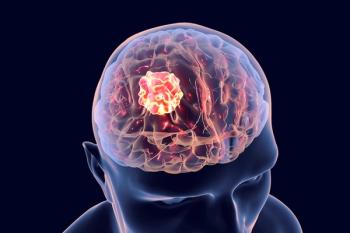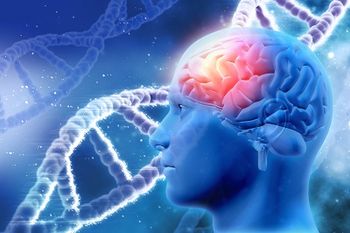
- ONCOLOGY Vol 9 No 1
- Volume 9
- Issue 1
Commentary (Laws): Current Management of Meningiomas
Dr. DeMonte has used an interesting case report to provide an excellent summary of the state of the art in the management of meningiomas of the brain.
Dr. DeMonte has used an interesting case report to provide an excellent summary of the state of the art in the management of meningiomas of the brain.
These lesions are the most common benign tumors affecting the central nervous system. For many years, they have represented a major challenge for neurosurgeons, both technically and conceptually [1]. The fact that most of these tumors can be cured surgically has stimulated a variety of innovative approaches. It has led to the recent developments of successful surgery within the cavernous sinus and successful approaches to the skull base--both areas that were previously considered surgically inaccessible.
There are many fascinating aspects to the problem of meningioma. The benign nature of most meningiomas makes them generally favorable lesions, ones which, at least theoretically, can be cured by surgical therapy alone. Sex and age predilection for the occurrence of meningiomas have been the foundation for investigation regarding the hormonal basis of tumor pathogenesis for this lesion. The presence of estrogen and progesterone receptors on meningiomas has been well documented. As is pointed out in this review, this fact has served as the basis for attempts at hormonal therapy. These attempts are still under analysis.
Histologically, meningiomas can be differentiated into a number of different groups, but it is curious that the histology of the tumor rarely provides pertinent information with regard to the behavior of the lesion or its likelihood of recurrence. It appears that any histologic subtype of meningioma can have either a focal or a diffuse origin from the meninges, and there is no consistent correlation of specific type with intracranial location. What does appear to be correct, however, is that those tumors with a focal origin are the ones most likely to be cured surgically, and those with a more diffuse dural origin are those that tend to defy complete surgical resection and are most likely to recur following any form of treatment.
A Major Problem
The aggressive "cellular" or "atypical" meningioma represents a major problem in neurosurgical management. These tumors usually have suspicious histologic features, such as increased numbers of mitoses, but otherwise they look like fairly typical meningiomas. Unfortunately, they can follow a very aggressive course, with rapid and multiple recurrences unresponsive to standard forms of treatment. The nature of this aggressive change is not understood, and it represents a challenge for the future.
Equally difficult to explain has been the problem of cerebral edema surrounding many meningiomas [2]. A number of biochemical abnormalities have been identified, and a number of theories have been proposed in explanation of this phenomenon. It appears that the tumor "poisons" the surrounding brain, producing the edematous reaction, but the nature of this process is still speculative. Fortunately, this edema usually responds well to treatment with steroids, which sometimes need to be maintained for relatively long periods following successful surgery.
The peculiar features of meningioma biology surely are clues to the basic nature of this tumor and its etiology. Current studies emphasizing the molecular biology of these lesions offer great promise in helping us deal more effectively with meningiomas in the future. With the accurate characterization of tumor cell receptors, particularly with hormone receptors, new avenues for diagnosis and therapy are developing. With information regarding alterations in the genome of meningiomas [3], the opportunity for novel forms of diagnosis and therapy exist, and should hold significant promise as our basic understanding of this difficult tumor evolves.
References:
1. Newman SA: Meningiomas: A quest for the optimum therapy. J Neurosurg 80:191-194, 1994.
2. Philippon J, Foncin JF, Grob R, et al: Cerebral edema associated with meningiomas: Possible role of a secretory-excretory phenomenon. Neurosurgery 14:295-301, 1989.
3. Detta A, Kenny BG, Smith C, et al: Correlation of proto-oncogene expression and proliferation in meningiomas. Neurosurgery 33:1065- 1074, 1993.
Articles in this issue
almost 24 years ago
Diagnostic and Management Issues in Gallbladder Carcinomaover 29 years ago
Taxotere Found Active Against Advanced Non-Small-Cell Lung Canceralmost 30 years ago
Monica Morrow on the Pros and Cons of Stereotactic Breast Biopsyalmost 31 years ago
Promising Results Demonstrated with New Agent for Non-Small-Cell Lung Canceralmost 31 years ago
The Breast Implant Controversy: Psychosocial Implicationsalmost 31 years ago
Amifostine Shortens Bone Marrow Recovery Period in Breast Cancer Patientsalmost 31 years ago
New Signaling Pathway Involved in Canceralmost 31 years ago
Colony-Stimulating Factors Shorten Severe Neutropeniaalmost 31 years ago
Diagnostic and Management Issues in Gallbladder CarcinomaNewsletter
Stay up to date on recent advances in the multidisciplinary approach to cancer.



















































































